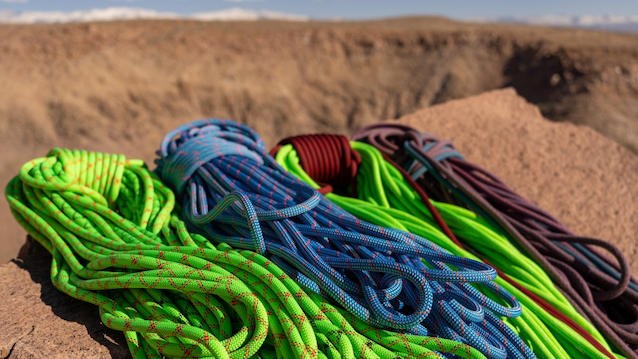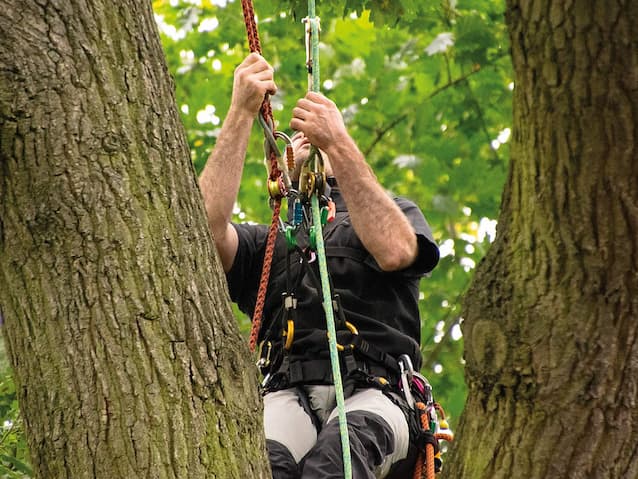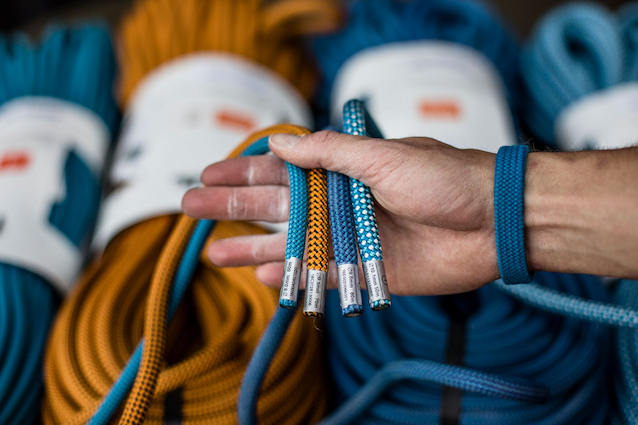Rock Climbing 101: Beginner’s Guide to Climbing Ropes
Before modern bolts and cams, harnesses with waist belts, and (most importantly for this discussion) before the dynamic nylon rope was invented, the idea that the leader mustn’t fall was taken very seriously. From the 1860s to the 1950s, climbers used ropes made of natural fibres. These ropes were about the same thickness as modern ropes, but they were much less strong when subjected to static forces and broke easily when subjected to sudden loads, like falls.
This relationship between the leader and falls started to change in the 1950s when more flexible nylon ropes and dynamic catch techniques started to be used. However, it wasn’t made official by the climbing community until Edelrid invented the kernmantle rope design in 1964, which is still the basis of modern ropes.
Important Features of Climbing Ropes

source: outdoorgearlab.com
Dynamic or static
When most of us think of reliable outdoor climbing rope we think of ropes that are super flexible. They are called “dynamic” because they stretch a lot and can take up the force of a fall. If you are reading this article, you are probably looking for a dynamic rope. On the other hand, static ropes don’t stretch much, so you shouldn’t fall on them. Instead, they are made to carry gear up big walls, serve as fixed ropes for juggling or toprope-soloing, and be used as taglines.
Single ropes
Single ropes are exactly what they sound like, and what most people think of when they hear the word “rope”. They only have one strand and are meant to be used on their own, not with another rope. But it’s still important to talk about two-rope systems.
Two-rope systems

source: trees.org.uk
You may have seen videos of climbers leading with two thin outdoor climbing ropes instead of a single thicker one. These videos often show people doing very scary things. A double-rope system can be used for more than one reason and it’s because it makes the rope move faster and can let climbers do full-length rappels, which means rappelling the full 60 metres of a 60-meter rope without having to drag a tag line up the wall. The main problems with a two-rope system are that it is heavy, expensive, and hard to set up. Both the climber and the belayer need to practise before they can handle two ropes at the same time.
Half ropes
Most double ropes are thinner than single ropes (with a diameter between 7 mm and 9 mm), but they are still strong enough to catch a fall on their own, even when they are part of a two-rope system. This means you can clip one rope into a protection point, say, on the left side of a sharp arete, and the other into a protection point on the right side of a sharp arete. This lets you climb two lines of protection at the same time.
Two ropes
On the other hand, twin ropes are usually thinner (7 to 8 mm) and made for dual use, which means that both ends must be clipped to every piece. Even though they aren’t as useful for rock climbing as half ropes, they are thinner and the lightest system for long ice or alpine routes with rappel descents.
Length

source: thefrontclimbingclub.com
The length of the rope has changed over time, which is something you should think about when you buy one. In the 1960s, 1970s, and 1980s, most ropes were 50 metres long. This meant that most single-pitch routes were only 25 metres high (80 feet). In the 2000s, the standard rope length was 60 metres, which meant that single-pitch routes were about 100 feet long. Today, a 70-meter rope is a norm, but 80-meter ropes are not unusual.
Before you buy an outdoor climbing rope for your adventures, you should make a quick list of what you want to do with it. If you plan to do most of your climbing where the cliffs are short and most routes were built in the 1990s, a 60-meter rope will be enough to lower you off most routes. In a newer area, on the other hand, you may find climbs that need much longer ropes. And it’s important to note that in many older-school areas where pitches are often longer than 30 metres, a longer rope might let you rappel down more climbs without having to carry a second rope.
Thick ropes
Thicker ropes are easier to grab, lock into belay devices more tightly (though some newer belay devices are made with thinner lines in mind), and are stronger so they’re less likely to be cut by a sharp edge and can take more falls before it wears out. And since they are larger, rope drag is more of an issue on longer throws. Also, they are harder to put into quickdraws. Thick ropes are great if you do a lot of top roping or climbing on big walls, or if you want a working rope for projecting that can handle many shortfalls.
Thin or skinny ropes
Skinny ropes are getting more and more common. They are less of a load (literally) on long climbs, like sport cave epics or long, wandering outdoor pitches, or any climb where weight is important. They are easier to clip, and make it easier for the person who is belaying to give space.
The problems with thinner ropes are that they don’t last as long, they are more likely to get cut when they run over a sharp edge, and they can be a little slippery in some belay devices. However, belay devices have changed along with ropes, so this isn’t as much of an issue as it was fifteen years ago. Thin ropes are great for competitive climbing (redpoint burns) and long climbs where rope spin can be a problem.



